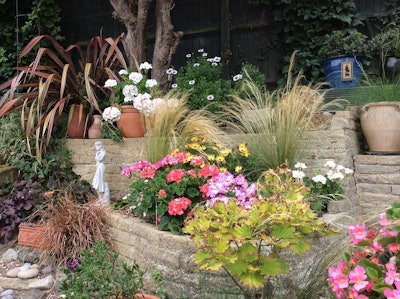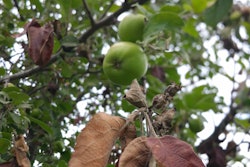 Photo: Pixabay
Photo: Pixabay
There are many customers who love the outdoors and the beauty that comes with it, but they may not appreciate the allergies that also come with hanging around outdoors.
Many people are plagued with allergies each spring, and this can severely hinder their enjoyment of the outside world. But there is something you can do to help. With your customer’s plant preferences and allergies in mind, you can begin planning an outdoor paradise that is not only pleasing to the eyes but also to congestion-prone nostrils.
Not everyone is allergic to the same thing, and allergic reactions can range from slight to severe depending on the person. There are many popular shrubs, perennials and annuals that cause reactions, so take a look at some good alternatives that will sooth the savage sneeze.
Choosing alternatives
When checking out a garden, the eyes are naturally drawn to the brightest flowers, therefore they are blamed for causing allergies, but these plants aren’t usually the culprit. Bright flowers attract more insects, which in turn carry off the pollen.
Typically, it’s the less showy plants that are the culprit of allergens, since they are more reliant on the wind to do their pollinating.
While there are many popular plants your customers may love, they may not be the best choices if they are trying to actually enjoy what you plant. When checking out potential allergy-free plants, try choosing female plants, and pay close attention to sterile and hypoallergenic hybrids.
Castor bean (Ricinus communis)
For example, castor bean is a popular fast-growing statement plant. It grows big and quickly, but as luck would have it, all parts of the plant are toxic. Its pollen causes allergic reactions, and contact with the sap can also cause reactions. Along with the allergy potential and toxicity, it is also an invasive species.
As an alternative, consider hibiscus (Hibiscus rosa-sinensis) instead. These beautiful flowers stand out easily and produce tons of flowers. Its blooms attract butterflies and birds, and it is a prolific bloomer.
Oxeye daisy (Leucanthemum vulgare)
The oxeye daisy, known as the common daisy, is another allergy-inducing culprit. These are some of the most popular summer flowers, but people react to their flowers, leaves, pollen and even extracts derived from them.
As an alternative, consider fall phlox (Phlox paniculata) as a more allergy-friendly choice. It produces fragrant flowers throughout the summer and comes in shades of rose, lavender, white, pink and red.
Jasmine (Jasminum spp.)
It’s hard to not love these sweet-smelling, fast-growing, beautiful flowering plants…unless, of course, you are allergic to it. Their pollen has been known to cause ongoing sneezing fits that can keep customers confined to the indoors.
As an alternative, consider planting sweet peas (Lathyrus spp.). For customers who enjoy the look of climbers and an enticing fragrance, sweet peas are an excellent choice.
Ragweed (Ambrosia spp.)
While customers may not realize ragweed is in their yard, and you yourself may not have planted it there, it tends to show up stealthily. It bears the brand of hay fever culprit, and all species can cause strong allergic reactions. It grows nationwide, unfortunately, and it can be pretty tough.
As an alternative, there are two possible choices. While goldenrod (Solidago spp.) has accumulated its own set of grievances over the years in the allergy department, it has since been proved that its pollen is carried away by insects.
If, however, your customers are still clinging to the idea that goldenrods are just as bad as other allergy-inducing plants, other alternatives are lemon daylilies (Hemerocallis lilioasphodelus). Daylilies are adaptable perennials that come in an array of colors. Many are known for blooming in the late spring and early summer, but other hybrids are late bloomers.











